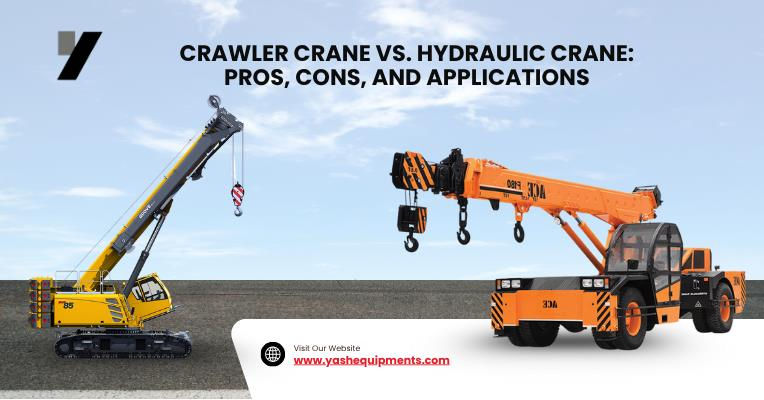Common Manlift Mistakes and How to Avoid Them
- tarunk3
- Oct 9
- 3 min read
Updated: 4 days ago

Manlifts are essential equipment in construction, maintenance, and industrial work. They make it possible to reach high places safely and efficiently. However, improper use of manlifts can lead to serious accidents, injuries, and equipment damage. At Yash Infra Equipments, we understand the importance of safety and efficiency, so we’ve put together a guide on the most common manlift mistakes and how to avoid them.
1. Skipping Pre-Use Inspections
One of the biggest mistakes operators make is skipping the pre-use inspection. Every manlift should be thoroughly checked before use to ensure it is in proper working condition. Common issues include hydraulic leaks, worn-out tires, malfunctioning controls, and loose components.
How to avoid:
Always perform a pre-use inspection as per the manufacturer’s checklist.
Check for leaks, cracks, or worn-out parts.
Test the controls and emergency stop buttons to ensure they work correctly.
Regular inspections can prevent equipment failure and avoid costly accidents.
2. Ignoring Load Limits
Manlifts are designed to carry specific weight limits. Exceeding these limits can make the lift unstable, increasing the risk of tipping over or mechanical failure. This mistake is often seen when multiple workers or heavy materials are lifted without considering the capacity.
How to avoid:
Know the weight limit of your manlift and never exceed it.
Include the weight of workers, tools, and materials in the total load calculation.
Educate all workers about load capacities and safety guidelines.
Following weight limits ensures the lift operates safely and prolongs its lifespan.
3. Using Manlifts on Uneven or Soft Surfaces
Using a manlift on uneven or soft ground is a common mistake that can lead to tipping accidents. Even small slopes or soft soil can affect the stability of the lift.
How to avoid:
Always set up manlifts on flat, firm, and stable surfaces.
Use outriggers or stabilizers if your lift has them.
Avoid working near edges or trenches where the ground may be unstable.
Proper surface preparation is crucial for maintaining balance and safety.
4. Failing to Wear Safety Gear
Some workers mistakenly believe that manlifts are safe without wearing personal protective equipment (PPE). This can be dangerous, especially when working at heights.
How to avoid:
Always wear a safety harness attached to designated anchor points.
Wear helmets, gloves, and non-slip footwear.
Make sure all safety gear is in good condition and worn correctly.
Wearing the right safety gear can prevent injuries and save lives.
5. Improper Use of Controls
Improper or sudden movements while operating a manlift can cause accidents. Jerky movements, over-speeding, or misusing the control panel may lead to tipping, collision, or falls.
How to avoid:
Take proper training before operating a manlift.
Move the lift slowly and steadily, especially when elevated.
Avoid abrupt turns or movements on elevated platforms.
Controlled operation ensures smooth performance and minimizes risks.
6. Not Securing Tools and Materials
Workers sometimes leave tools and materials unsecured on the lift platform. These items can fall, injuring people below or damaging property.
How to avoid:
Use tool lanyards and safety nets to secure tools.
Keep materials organized and avoid overloading the platform.
Never lean over the guardrails to retrieve items.
Secure tools and materials not only protect others but also maintain platform stability.
7. Overlooking Weather Conditions
Weather plays a significant role in manlift safety. Strong winds, rain, or ice can make operations extremely hazardous. Many accidents occur because operators ignore adverse weather conditions.
How to avoid:
Do not operate manlifts in high winds or storms.
Avoid wet or icy surfaces that reduce traction.
Check weather forecasts and plan your work accordingly.
Being mindful of weather conditions ensures both safety and efficiency.
8. Skipping Training and Certification
Operating a manlift without proper training is a critical mistake. Untrained operators may not be aware of safety protocols, emergency procedures, or equipment limitations.
How to avoid:
Ensure all operators complete certified training programs.
Provide refresher courses regularly.
Promote a culture of safety where questions and concerns are encouraged.
Proper training reduces the risk of accidents and improves productivity on-site.
Conclusion
Manlifts are indispensable tools for working at heights, but safety should never be compromised. Common mistakes like skipping inspections, ignoring load limits, using lifts on unstable surfaces, and improper training can lead to severe consequences.
By following the tips shared by Yash Infra Equipments, you can prevent accidents, protect workers, and ensure smooth operations. Always prioritize safety, perform regular inspections, follow manufacturer guidelines, and invest in proper training. A safe work environment not only protects lives but also boosts efficiency and reduces downtime.
For high-quality, reliable manlifts and expert guidance, trust Yash Infra Equipments – your partner in safe and efficient height solutions.



Comments